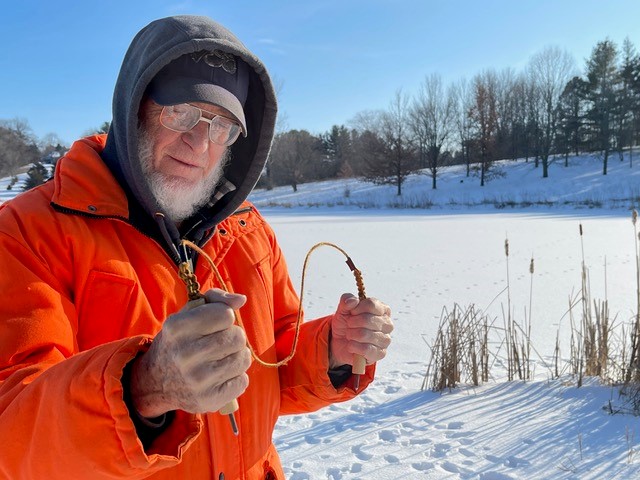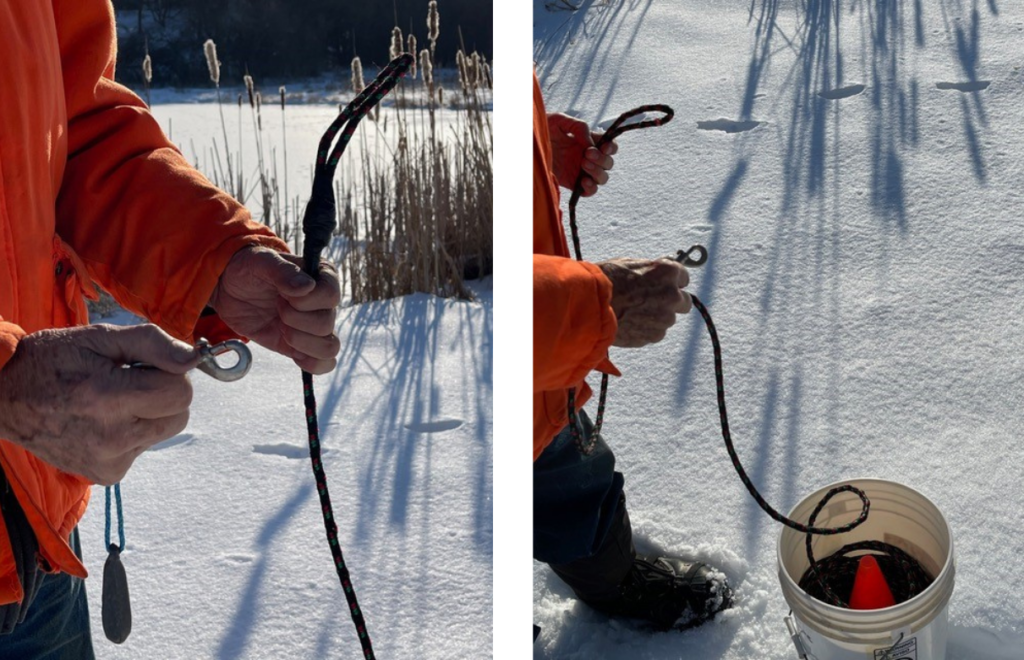Ice Safety

A homemade pair of necklace hand spikes which can give you a grip on the ice to help pull yourself out. All photos by Kate Sulentic.
So far it has been a mild winter, keeping our midseason pond ice marginal for ice fishing and other topside activities. Some thoughts regarding ice safety on ponds:
- The usual rule is to wait for at least four inches of clear hard ice to form, and needing more if it is bubbly or soft.
- Keep your distance from each other, not because of Covid, but to spread your weight over larger area.
- Stay away from overflow pipes, often located near the center of a dam. Water flowing toward them can thin the ice there on the underside.
- Water tables are high this winter. Flow of little springs and seeps up into shallow bays can erode the ice from below in those locations.
- Stay away from any logs imbedded in the ice. Their dark color makes them solar collectors on sunny days which can thin the ice around them.
- Have some sort of rescue plan in mind, just in case. This might include a cell phone to call 911, a necklace pair of hand spikes, or a prepared rope for example. Within the last couple of years, ice fishing pants have become available in bib-style, which are air-filled and buoyant enough to float you. Or simply wear a personal flotation device or PFD.
- Go with another person or a group.
- Forego happy hour until you are safe back home.
- Non-professional rescue is fraught with difficulty. The victim may go into shock so quickly that they cannot help themselves. Or the would-be rescuer might also break through. A large person wearing soggy clothing may prove impossible to pull out, even with a lasso below their arms, in part because people on the other end of the rope cannot get traction on the ice. A long rope that can reach shore might help.
- There is no substitute for avoiding the crisis of falling through the ice.

A clip-on six ounce fishing sinker can provide enough weight to throw a light rope about 30 feet. A large lasso type loop can be made as needed by pulling some rope through a smaller loop in the end of the rope. Rope can be kept from tangling by coiling it carefully inside a five gallon bucket with a little traffic cone in the bottom.



